Kingdom Plantae Family Vitaceae Genus Vitis Higher classification Grapevines | Order Vitales Subfamily Vitoideae Scientific name Vitis coignetiae Rank Species | |
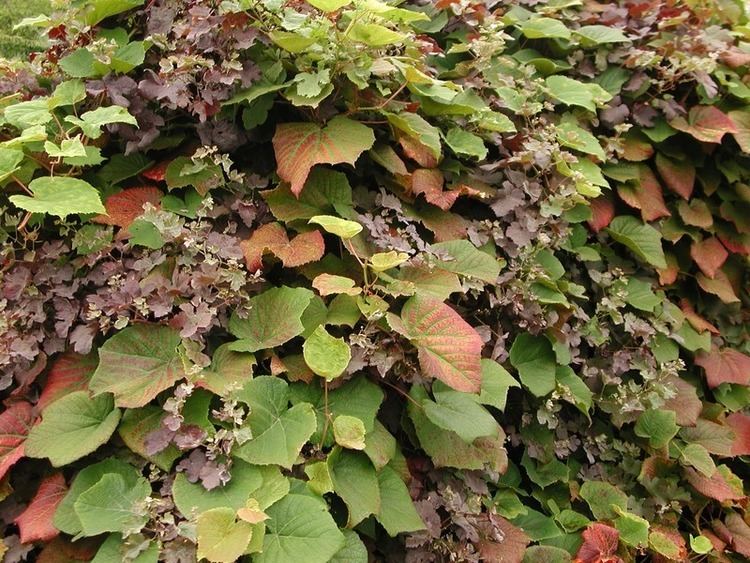 | ||
Similar Ampelopsis glandulosa var heter, Akebia quinata, Grapevines, Vitaceae, Vitis amurensis | ||
Vitis coignetiae crimson glory vine
Vitis coignetiae (Crimson glory vine, 머루 meoru in Korean), and ヤマブドウ yama-budo in Japanese) is a plant belonging to the genus Vitis that is native to the temperate climes of Asia, where it can be found in the Russian Far East, (Sakhalin); Korea; and Japan (Hokkaido, Honshu, Shikoku). It was described botanically in 1883.
Contents
- Vitis coignetiae crimson glory vine
- vitis coignetiae crimson glory vine air hockey saloon chris zabriskie
- History
- Description
- Uses
- Chemistry
- Gallery
- References

vitis coignetiae crimson glory vine air hockey saloon chris zabriskie
History
The species name is dedicated to Mr. and Mrs. Coignet who reportedly brought seeds back from their trip to Japan in 1875.
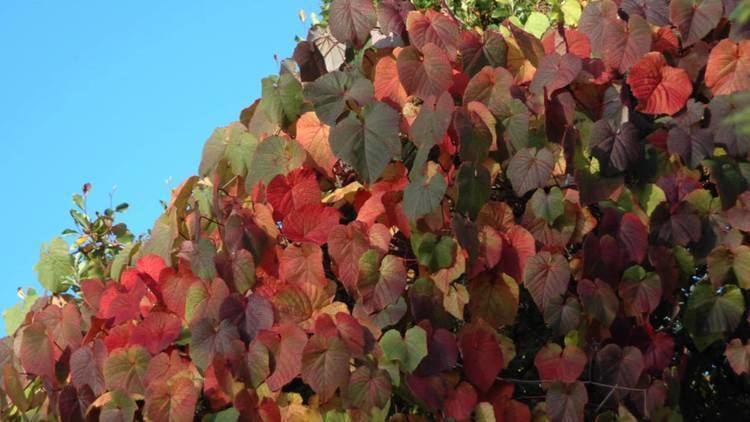
This vine was also reported in 1884 snowy regions of Japan by Henri Degron sent to East Asia to seek wild vines resistant to Phylloxera. Degron sent specimens to a Professor Planchon of Montpellier who named them Vitis coignetiae but did not retain them due to their low resistance to phylloxera. Degron planted a vineyard in Crespières, Île-de-France where one of the vines reached a length of 32.8 meters and a height of 2.8 meter. In the cooler Norman climate the vine produces a bitter wine, rich in color and extract.
Description
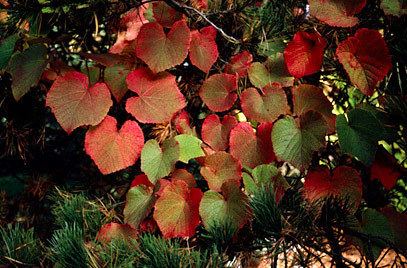
The vine is very vigorous, with purple shoots.The deciduous leaves are large (15 to 30 cm in diameter), simple, orbicular, toothed, with deep petiole. First green, they turn red-orange in autumn.
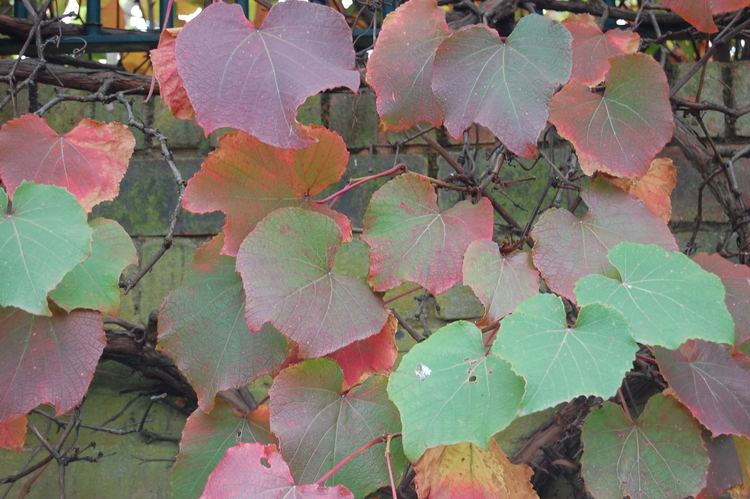
Wild vines can be male, female or hermaphrodite. Clusters are large with small berries and large purple seeds. It is found in the mountainous regions of Japan and up to 1300 m altitude in Korea.
Uses
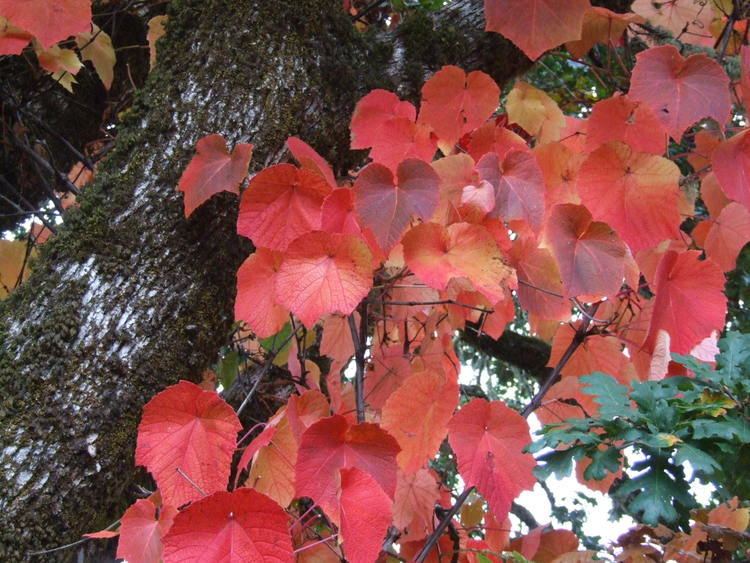
In East Asia it is grown as an ornamental plant for its crimson autumn foliage; and as an Oriental medicinal plant.
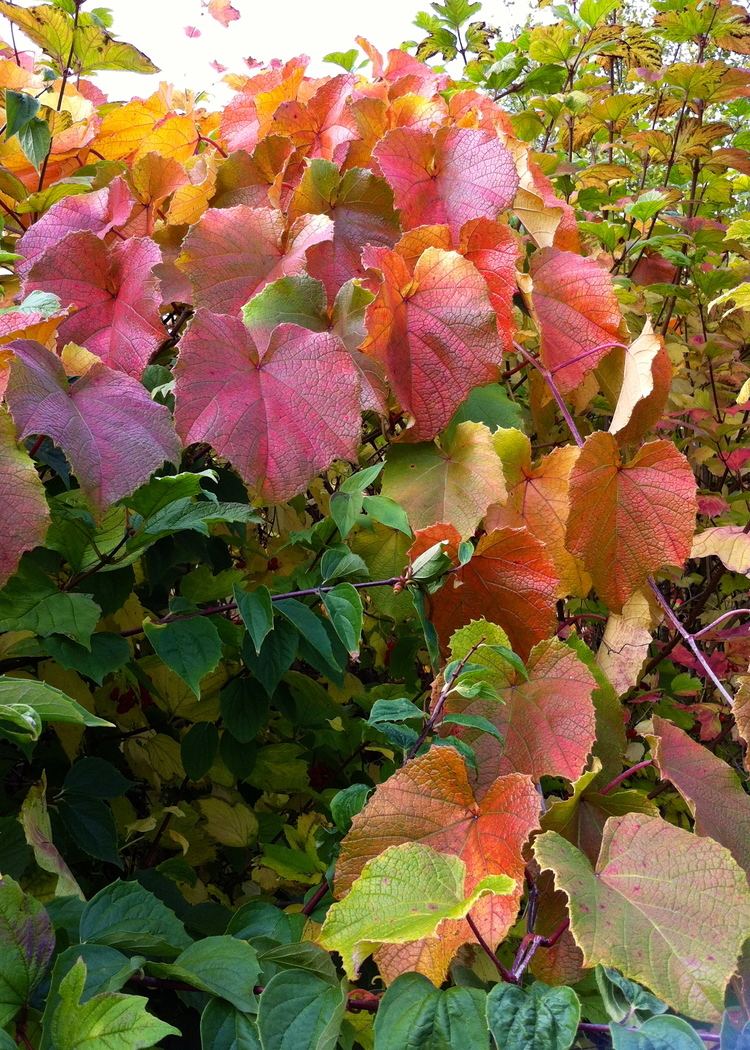
It is used to produce wines in Korea and Japan. These are at first bitter, but softened with the addition of sugar.
Chemistry
The plant contains the stilbenoids ε-viniferin and rhapontigenin.
